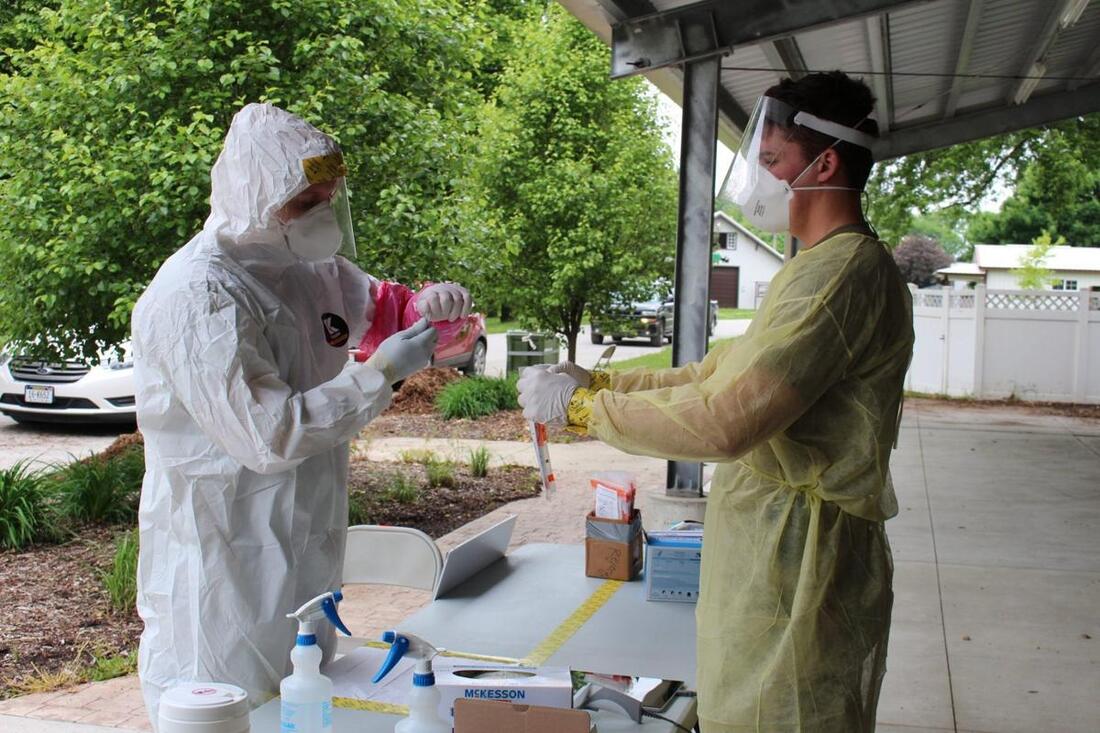Demographics
|
Nebraska
The NE soldiers were all enlisted members of the NE Army National Guard. All soldiers that participated from this state had the same Military Occupational Specialty (MOS): Chemical, Biological, Radiological, and Nuclear Specialist (CBRN or a 74D). The soldiers were labeled (labels are based on when responses were received):
Additional Information: I2 informed that all three members of the questionnaire were on different testing teams and therefore had somewhat different experiences. I2 was also the oldest, in her mid-20s. |
Ohio
The OH soldiers were all enlisted members of the OH Army National Guard. All soldiers that participated from this state has the same MOS: Combat Medics (Medics or 68W). The soldiers were labeled:
Additional Information: I1 informed that all three members had worked together on a testing team at some point in their mission. He also informed that all members of his team and most teams (excluding higher leadership that did not directly interact or test patients) were in their early to mid twenties. |
Mission Breakdown
Nebraska: All NE soldiers worked on community test teams. All teams traveled at some point, but could also sit in the same location for awhile based on state 'hot spots' and needs. They also worked to transport specimen to labs. Due to their MOS, none of the NE soldiers conducted the COVID-19 testing themselves, but instead worked registration, logistics, test collection, etc.
Ohio: The majority of OH soldiers started their testing missions at long-term care facilities, testing staff and sometimes patients. Most soldiers did participate in community testing at some point. As medics, the ethnography participants were all directly conducting the COVID-19 tests on civilians. They also delivered all collected samples to labs.
Note: Though all participants were Army National Guard Soldiers, missions in both states were joint force, meaning that within each team there were also Air National Guard members - Airmen. Joint force missions are more complex at the organizational level due to the need for multiple components and members of leadership to collaborate at the higher level, especially at mission formation.
Ohio: The majority of OH soldiers started their testing missions at long-term care facilities, testing staff and sometimes patients. Most soldiers did participate in community testing at some point. As medics, the ethnography participants were all directly conducting the COVID-19 tests on civilians. They also delivered all collected samples to labs.
Note: Though all participants were Army National Guard Soldiers, missions in both states were joint force, meaning that within each team there were also Air National Guard members - Airmen. Joint force missions are more complex at the organizational level due to the need for multiple components and members of leadership to collaborate at the higher level, especially at mission formation.
Questionnaire Responses
The complete responses to questions:
| COVID-19 Military Responses.pdf |
Interviews Transposed
|
| ||||
Major Takeaways
One: The formation of the National Guard missions in each state were necessary due to lack of infrastructure and government funding to the local healthcare system. The National Guard was called in as a form of subsidized aid for the states to buy time. This can been seen by the large decrease in the number of National Guard personnel currently involved in state sponsored COVID testing and the increase in the number of private corporations taking over the task (despite increased COVID rates across both states). The Guard was not implemented to be a long-term public health response, but instead as a temporal unit.
Two: The Guard's mission was isolated and not coordinated well with Public Health experts. Despite their ideal positioning to collect data for the public health departments, Guard members were not instructed to collect contact tracing data that could have been used to trace and limit the virus's spread.
Three: The Guard may have had a role in the spread of COVID and it would not be known due to their lack of personnel monitoring. Between the soldiers from the states of Nebraska and Ohio, the maximum number of COVID tests conducted on personnel was 1. Symptom and temperature monitoring was also inconsistent and limited. All of this despite known exposure to the virus. Some of the risk was mitigated by the wearing of PPE, however, confidence in any equipment should be verified.
Four: The major impact of testing by the National Guard soldiers was the comfort of civilians momentarily knowing their test results. This knowledge was key to allowing for people to continue working or for people to receive medical or financial compensation in the case that they tested positive.
Two: The Guard's mission was isolated and not coordinated well with Public Health experts. Despite their ideal positioning to collect data for the public health departments, Guard members were not instructed to collect contact tracing data that could have been used to trace and limit the virus's spread.
Three: The Guard may have had a role in the spread of COVID and it would not be known due to their lack of personnel monitoring. Between the soldiers from the states of Nebraska and Ohio, the maximum number of COVID tests conducted on personnel was 1. Symptom and temperature monitoring was also inconsistent and limited. All of this despite known exposure to the virus. Some of the risk was mitigated by the wearing of PPE, however, confidence in any equipment should be verified.
Four: The major impact of testing by the National Guard soldiers was the comfort of civilians momentarily knowing their test results. This knowledge was key to allowing for people to continue working or for people to receive medical or financial compensation in the case that they tested positive.

